The RGS #41 with an unknown D&RGW engine assisting on a freight at Porter, Colorado. Interesting that the #41 is still wearing the big pilot plow in June of 1948.

The RGS #41 with an unknown D&RGW engine assisting on a freight at Porter, Colorado. Interesting that the #41 is still wearing the big pilot plow in June of 1948.

The #41 and D&RGW K-27 #452 thread through an S-Curve just outside of Hesperus, Colorado on September 30th, 1948. The Rio Grande Southern was in it's twilight years by this point. The RGS was hanging on by a thread at the end, mostly supported by the mail contract, and after the RGS failed to deliver the mail in the winter of '52/'53, the postal service yanked the contract and the D&RGW made the decision to abandon the RGS.

The same train with RGS #41 and D&RGW #452, again near Hesperus, Colorado. Interesting that the #41 just has plain lettering on the tender, instead of the curved Rio Grand Southern logo.

One of the most famed shots of the RGS is this photo by William Moedinger of Rio Grande Southern 4-6-0 #20, originally of the Florence & Cripple Creek, with a crewman riding the pilot to look out for rockslides, which were common on the line.

Durango & Silverton does have their own Rio Grande Southern 2-8-0, C-17 #42, stored in the museum at Durango, but it has not run since 1961. It was used during the 1953 scrapping of the Rio Grande Southern, along with K-27 #461, then sold to Magic Mountain in 1959, ran for about a year until being parked as a display piece, and then was shuffled around to various locations until ending up at Durango in 1981 and being sold to D&S in 1989. It was apparently evaluated for restoration at some point but it was found that life on the RGS was hard on the engine and the frame is a bit of a mess and it would need a lot of work. Further, with only 17,000lbs tractive effort, roughly, it's considerable less powerful than even the K-28 engines and it would be of limited use and not be able to earn it's keep.

The #42 at Dolores during the scrapping of the RGS, showing it's pretty ramshackle condition at the end of it's original life.
A report from someone involved with Knott's Berry Farm on what all was done to the #41 during it's overhaul in Durango.
"The #41 received a similar amount of work as [RGS 4-6-0] #20 did. Knott's had started the rebuild years ago and had replaced tires on 3 out of the 4 drivers. The jacketing and lagging had been removed, ect.
The D&S removed the boiler from the frame. The frame was not as bad as 20s, but it wasn't straight and square. The distance in between the frames was not consistent, 1 or 2 additional cross members were fabricated. One was installed where there must have been one before, and that the Grande had removed. In fact, #346 has the same spot where a cross member was at some point. (Today it would require modifying the ash pan to put one back.) Brocken frame bolts that we couldn't replace when I was at the farm were replaced. Old D&RG/RGS welds were ground out and rewelded. The pony truck was completely rebuilt including new wheels, all suspension was gone through, the usual driver box work. The axles were replaced on the #3 and #4 drivers. New shoes and wedges were cast from CRRM patterns. Cylinders were bored, a new more accurate boiler tube pilot was made, as well as a new steel pilot beam. Valve gear was rebuilt. New link were made, new eccentric straps were cast, And yes CRRM ordered some as spares for 20 and 346.
The boiler received the usual work. New front tube sheet, firebox side sheet replacement or patchwork, new interior door sheet, new dry pipe, new smoke box. The DRHS loaned their pattern for new firebox doors. CRRM, DRHS, KBF, C&TS, and one other entity went in together to have new smoke stack and stack bases made. New steam delivery pipes were cast for the smoke box, CRRM ordered a set for 346 as well. She now has 2 proper reflex type water glasses, a new Von Boden style burner, new firing valve with quadrant. An SRC lifting injector on the fireman's side.
The cab was gone through and for added coolness it was lined with wood, and painted a proper shade of cab green. The rear cab doors had windows added, 2 additional windows were also added to the rear cab wall. Bernie Watts rebuilt both air pumps, the dynamo, and hydrostatic lubricator. I made a new proper sized number plate. Of course the brakes were completely gone through, all new plumbing. CRRM also provided some additional components for the air brakes, as well as partnering with the D&S on a large order of gaskets from Wabco.
The tender was rebuilt. The frame is new, the trucks were rebuilt and the truck bolster of one of them is new construction. The tender tank is new, though you wouldn't know that looking at it. The D&S sorta did what Knotts did ages ago but better. Long ago Knott's cut out and replaced the tops and bottoms of the tanks and then welded in a new inner wall. So no water has touched the old exterior tanks walls for many decades now. The D&S went a bit further. They had a new tank built then amazingly, wrapped the old tank skin(Sides and rear wall.) around the new one and welded them together. This once again gives you the reliability of a new tank while retaining the historic fabric and look with all the patches of the original tank. I love that."
Yesterday, CSX dropped their next heritage unit. There's been a bit of a pause on these, which I think had to do with them overhauling/reconfiguring some passenger cars for the Santa Train. This one is CSX #1871, the Atlantic Coast Line unit. I was actually expecting the late black and yellow livery, but they went with the classic silver and purple that was debuted on the EMC E3s. It's interesting to see that they dropped the fade effect between the two liveries.



CSX #1869, the C&O heritage unit, and CSX #1973, the Chessie heritage unit, are still my two favorites so far.
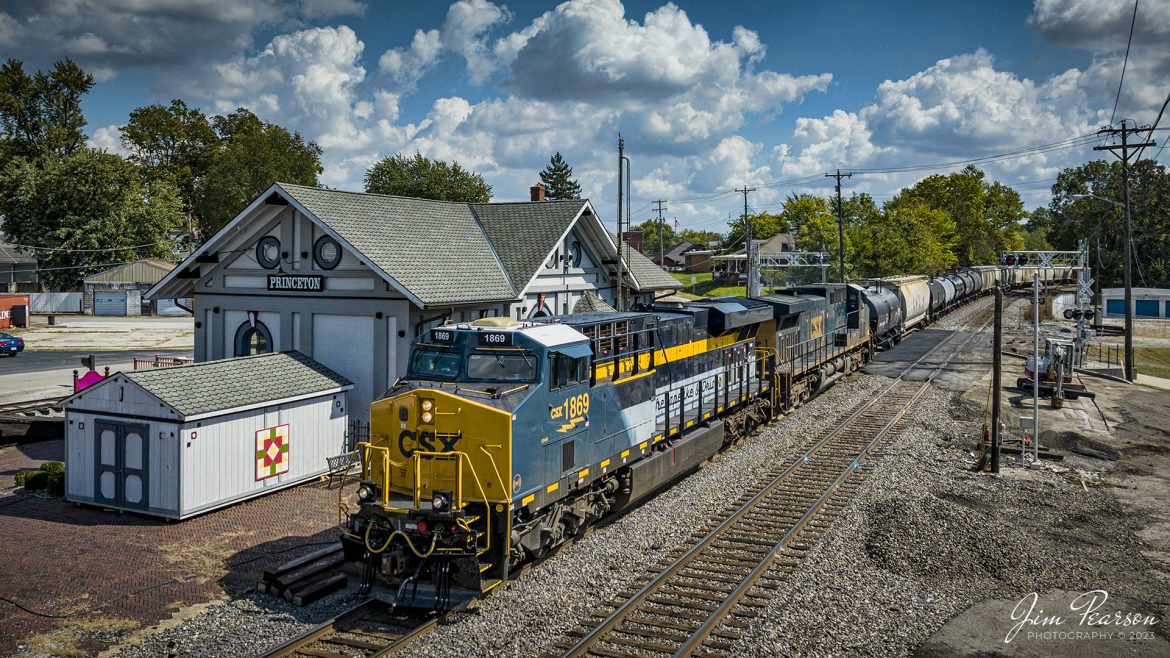
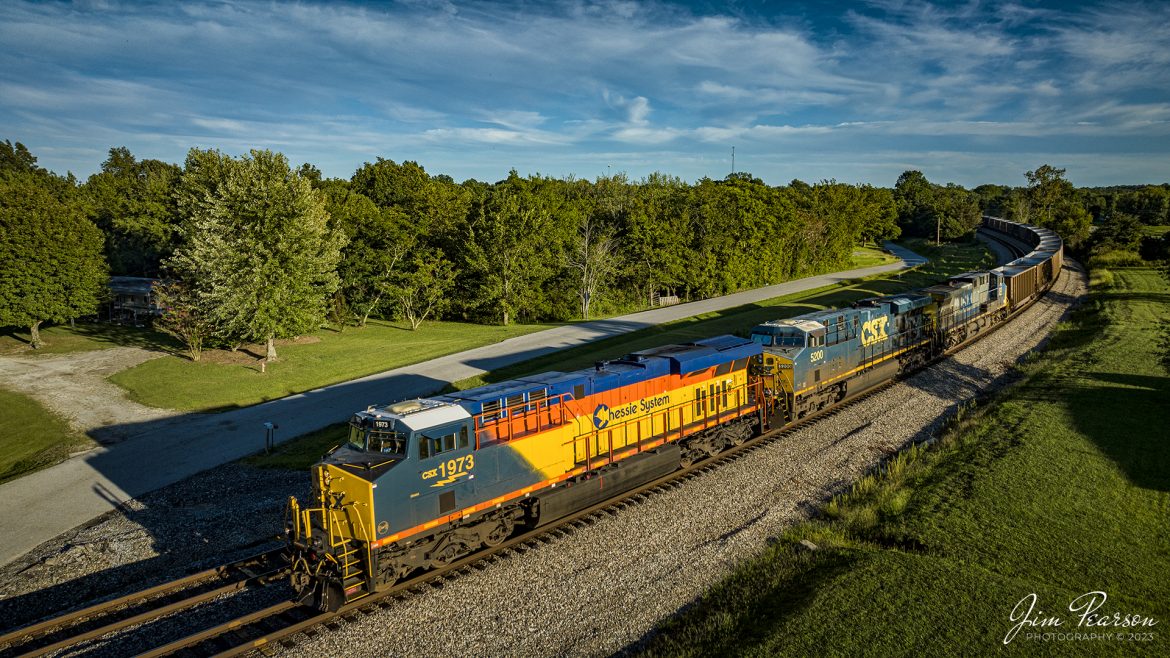
The RF&P heritage unit, which will be CSX #1834 (how nice of all of CSX's component railroads to all be founded in different years) should actually be pretty neat if they use the dark blue and gray paint scheme that was used on their late motive power, like their GP40s.

Speaking of an RF&P heritage unit, the paint bandits down in Cartersville, Georgia struck again and spray painted the nose of CSX #6394, an ex-RF&P GP40-2s, with the RF&P gray nose and cursive script.

Their previous handiwork was an ex-C&O GP40-2 this summer.

The T1 Trust folks, who are building the entirely new PRR T1 4-4-4-4 Duplex have posted an update, showing progress. They're beginning work on the frame, which they're constructing in a series of weldments, next. Pretty amazing to see that they're over 40% complete, and honestly hard to believe that there is going to be a T1 roaming the rails again.

Pretty wild that one of these will be back in existence. They look like nothing else out there, so it'll surely be an attention grabber. Of course, the problem is, it's probably going to be a nightmare to try and ride behind or chase once it is completed and running.

Shared by the T1 Trust on Facebook was a copy of a 1947 tower log from Junction Tower (just west of Fort Wayne, IN) to Vandal Tower, 18 miles west of Junction Tower. There's always a lot of dispute over just how fast the T1s ran. Shown here though, the T1s were averaging 10 minutes to cover 18 miles. That translates to an average speed of 108mph, if they were operating the same speed the whole way. But, there was a 30 mph curve before Vandal Tower that the T1s would of had to have slowed down for. To achieve these times, they would have been running 120 mph a large percentage of the run.


Is there any reason why a modern diesel couldn't *look* like a steam engine?
Or does the diesel negate the need for large drive wheels (arguably a huge part of steam aesthetic) and trying to *hide* the diesel power under a boiler would make maintenance a bigger nightmare?
And a big part, probably the market for said locomotive.
DjGreggieP said:Is there any reason why a modern diesel couldn't *look* like a steam engine?
Or does the diesel negate the need for large drive wheels (arguably a huge part of steam aesthetic) and trying to *hide* the diesel power under a boiler would make maintenance a bigger nightmare?
And a big part, probably the market for said locomotive.
Pretty much. There's no reason to have 63-80" drive wheels on a diesel locomotive. On steam locomotives, they just went bigger to improve balancing and to reduce all your machinery speeds on the connecting rods and valve gear, at the expense of starting tractive effort. An electric traction motor negates that need and that's why they almost all run 40" wheels. (Side note: EMD E-Units run a 36" wheel, pretty much unique to them, and that's why you see E-Units laid up with wheel issues, because no one will make a set of 36" wheels unless it's a large production run. The UP executive E-units in fact rarely get out anymore because the wheels were getting pretty thin. Supposedly Iowa Pacific Holdings had placed an order for 100 36" wheels at one point, to refit all their E-units, not sure if they were made before IPH went bankrupt)
Now, there was Ludlow & Southern #2, which was a 4-6-0 repowered with a diesel engine. The L&S had been an ore hauler for the Bagdad Chase Mine in Ludlow, Nevada and used an ex-NYC 4-6-0. When the mine began to play out, so went the L&S's fortunes, and when the boiler developed sever issues on the #2, they couldn't afford to replace it. All the other components of the 4-6-0 were in “serviceable condition", so it was just the boiler that needed to go. They also chopped off the valve gear, cylinders, cab, pilot, and handrail and in place of the boiler, a Holt Manufacturing Co. gasoline tractor engine (Holt would merge with Best to become Caterpillar and now Caterpillar owns EMD, bringing it full circle) was mounted on the frame and connected to the drivers by chain drive. A fuel tank was installed where the cab used to be, and rudimentary engine controls were mounted on a stand. With no need for a tender, that was dispatched to wherever old tenders go. It ran for a couple more years until the L&S called it quits, and then vanished off, likely scrapped.
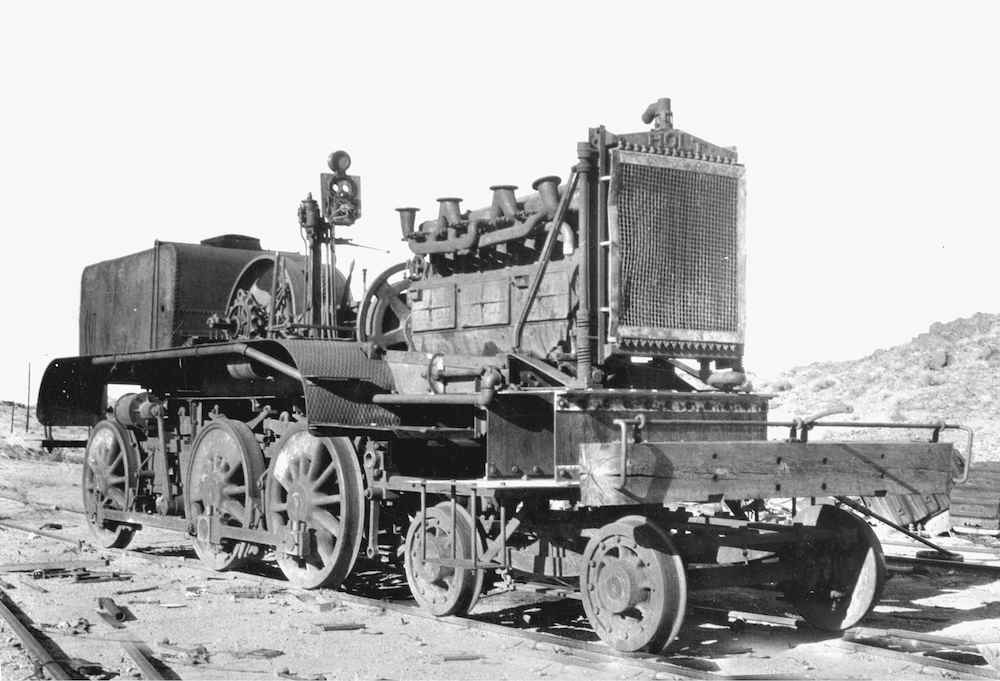
The National Railway Museum in Green Bay has a Sumter & Choctaw 2-8-2 that they wanted to use for hauling trains on the loop track around the property, but didn't want to get into actually restoring to operation, since boiler work is expensive and then you have to deal with 1472s. Their solution was to gut the tender, and install a GE 45-tonner running gear and trucks inside the tender. The side-rods from the 45-tonner on the "tender" trucks are the giveaway that all is not as it seems. The tender pushes the locomotive and hauls the cars around the property, controlled from the cab of the locomotive.

In reply to NickD :
I was thinking after that a 'slug' could very easily be dressed up to look like a tender and run push/pull
Glad to see the RGS postings! Here in Ridgway, CO (the home of the RGS and its Galloping Geese), our Ridgway Railroad Museum has about a dozen restored railcars that all ran locally on either the RGS or the Ouray Branch of the D&RG. We have fully restored RGS passenger coach 252 and will operate it on our 1/2-mile demonstration loop when we get our new (!) steam locomotive that has been under construction for about 7 years, and MAY be completed in 2024. It's in the final assembly stage around 85% complete. No guarantee on completion date, as no one has built a recreation of an 1880 4-4-0 steam locomotive in decades, and we have learned not to put out firm completion estimates that always end up slipping - who could have foreseen Covid, or a woman crashing her car into the fabrication facility, which caught fire (the car) and the related cleanup added a year to the project. It's a recreation (with some modern improvements for safety and performance) of RGS 36, which was one of 10 originally built for the D&RG by Baldwin in 1880 and later sold to Otto Mears to use to pull his personal car. We also have fully accurate and operational recreations of RGS Motor 1 (the Buick prototype for the Geese) and RGS inspection car 1, which was originally built in 1913 from a 1910 Model T and later destroyed in a wreck in 1925. We have Goose 4 in storage under cover for the winter, it will go back to Telluride for static display in June (it belongs to the Telluride Fire Department, who funded a fully operational restoration that we did about 10 years ago). We operate Goose 4 here in the late spring and in September/October, along with our other equipment on Saturdays - all for free. Visit ridgwayrailroadmuseum.org for info.
Great to see RGS info here!
New videos of the RGS 41 test runs in the snow at Durango over on the Narrow Gauge Discussion Forum.
Jim Pettengill said:We have fully restored RGS passenger coach 252 and will operate it on our 1/2-mile demonstration loop when we get our new (!) steam locomotive that has been under construction for about 7 years, and MAY be completed in 2024. It's in the final assembly stage around 85% complete. No guarantee on completion date, as no one has built a recreation of an 1880 4-4-0 steam locomotive in decades, and we have learned not to put out firm completion estimates that always end up slipping - who could have foreseen Covid, or a woman crashing her car into the fabrication facility, which caught fire (the car) and the related cleanup added a year to the project.
Was that Mammoth Locomotive Works? I recall hearing about that.
RGS is fascinating for how it went so quickly from triumph to failure. Otto Mears had decided to take on the task of connecting the D&RG's rail lines that were separated north (Ouray Branch from Ridgway south to Ouray) and south (narrow gauge line from Durango north to Silverton) of the central San Juans and had tried once before with the Silverton Railroad and failed, stymied by Red Mountain Pass. He got within 8 miles of Ouray, and had to call it quits. due to the the terrain The Rio Grande Southern was his second attempt and did make that vital connection between, although even then it was a tenuous connection. To cross the 6 mile gap in rail service from Ironton north to Ouray required 162 miles of trackage through some of the gnarliest terrain imaginable. But, right out of the gate, it was immensely profitable and paid back it's construction fees within the first year of operation. And then the price of silver crashed in 1893 and the RGS never recovered. In the '30s, they were so strapped for cash that the mail contract was the only thing keeping it afloat and they constructed those ingenious Galloping Geese just to handle the mail contract and move the occasional passenger.
Lucius Beebe talks about riding the length of the RGS in it's later years in Mixed Train Daily and being dumbfounded by the entire construction of the line. There were areas where the tracks and sidings were hanging onto the edge of the mountainside, and plenty of tales of trains plunging off into the canyon from the crew.
Some very exciting news, SMS Rail Services #9, an ex-USATC 0-6-0, has officially been certified for operation by the FRA. As shown in this photo of it making a test run, it still needs paint and some other finish work before it's ready to go into operation on their Woodstown Central line, but it's a huge step. The #9, after being discharged from the Army, did time on the Virginia Blue Ridge Railroad, then was sold to New Hope & Ivyland in the mid-'60s. It was restored to operation in 1975 but was only run until 1981, and then sat around languishing out behind the shops at New Hope. SMS Rail Services grabbed the #9 back in 2009 and has been working on it steadily since, and has done a ton of work to the engine. When SMS Rail Service first purchased the #9, they really had no intention of hauling passengers with it, it was mostly just a fun project with the intent to use it for switching some of the industries they serve, but then SMS became designated operator of the old Pennsylvania-Reading Seashore Lines Salem Branch and started Woodstown Central as a passenger-hauling line, with the intent to run the #9 over there.

Another photo of the #9 on it's test run. It appears to have one of SMS' end-cab Baldwins hooked behind it, and to the right you can see one of their B23-7s in primer. SMS Rail Services operates a rather eclectic fleet of equipment, and the #9 just adds to it.
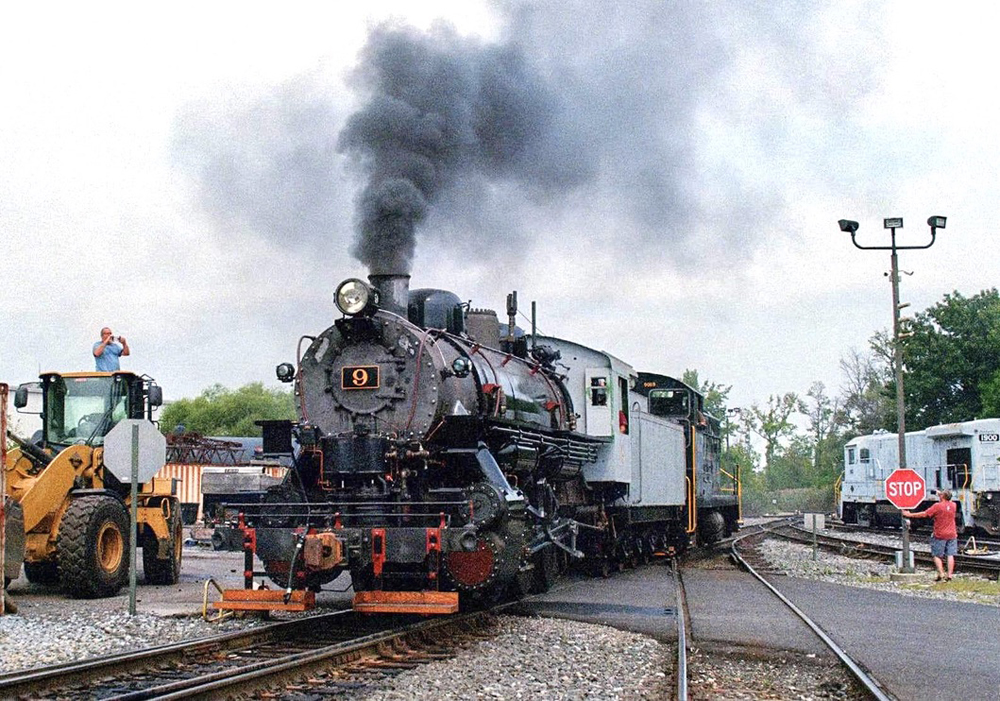
In reply to NickD :
Yes, they are still cranking away. I last saw the 36 in September, the fabrication quality is beautiful. The world will see it when it's done. Otto also planned to bridge the gap between Ironton on the north side of Red Mountain with an electric railway in 1892 and had the entire route surveyed, including a 360 degree trestle to gain elevation out of Ouray, but decided to survey an extension of the RGS south to Arizona first - and then the crash of 1893 ended the electric plans
Its pretty amazing how fast the Woodstown Central Railroad has developed. It opened late last year and when I visited it early this summer, they were running just a single end-cab Baldwin S-12 switcher with a single ex-Reading caboose in tow.

Since then, they've gotten two additional passenger cars into service, with more passenger cars and a converted flatcar on the way.
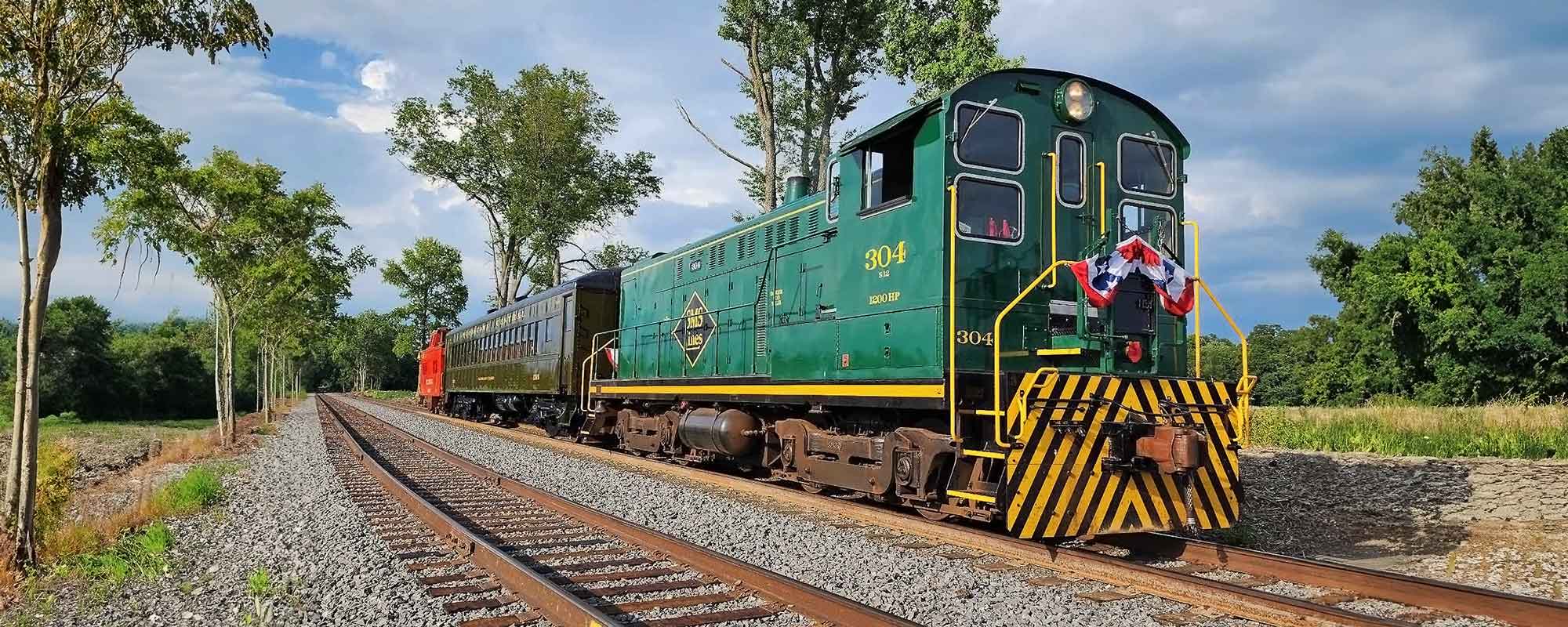
SMS has moved over one of their GP38s, which has actual history on the line, having originally belonged to the Pennsylvania-Reading Seashore Lines. The cab front that extends out past the doors is the giveaway; they were built with these extended cabs to accommodate dual control stands.
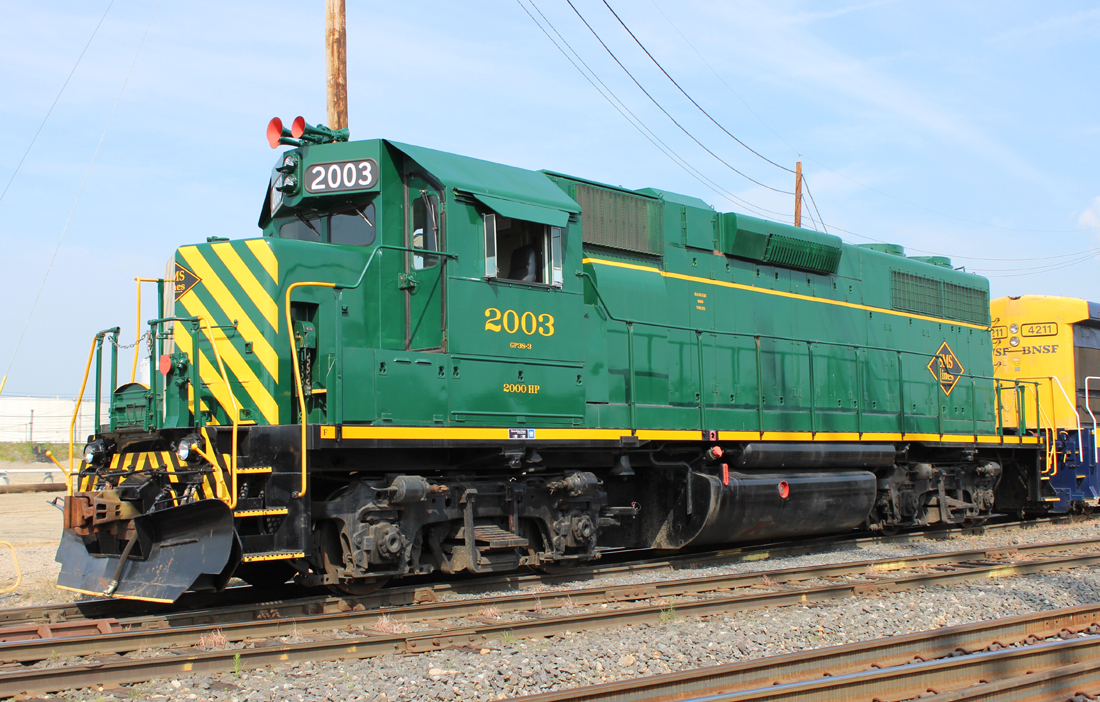
They've purchased/leased the two ex-Reading FP7s that were stored up at Steamtown with plans to get them running again.

And now they have a steam locomotive nearly ready to operate.

You'll need to log in to post.